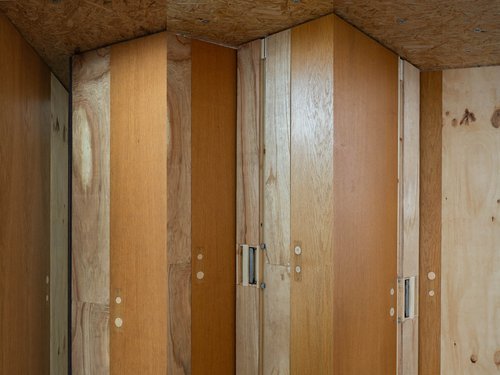The dominant model for explaining the world relies on a binary system: observations are categorized as either A or B, black or white, being or non-being. In short, this model adheres to a strict dualism rooted in the two-valued logic introduced by Aristotle. But how can we account for contradictory, opposing, or non-binary phenomena – particularly in architecture? Early efforts to translate this question into architectural discourse can be found in the work of Doris and Ralph Thut, who in turn draw on Gotthard Günther’s concept of a many-valued — or polycontextural — logic. This study applies these ideas to a fundamental architectural element: the door.
Strictly speaking, the more precise — if somewhat cumbersome — title “Investigation of Interior Door Systems with Regard to Flexibility in Residential Construction under Consideration of a Polycontextural Logic” would more accurately reflect the scope of the study. Nonetheless, the more accessible “Many-Valued Doors” (Mehrwertige Türen) is used here. While less precise, it effectively foregrounds the study’s central concerns.
This investigation examines the relationship between logic and architecture, particularly through the concepts of multivalence or polycontexturality and the architectural element of the door. The door, as both a physical and conceptual threshold, serves as a lens through which these ideas can be explored. Before integrating these perspectives, the following sections will first consider them separately.
The door is a building element rich in paradox. It is woven into everyday practices and rituals, regulating access from one space to another. It is at once exclusive and inclusive – both granting and restricting entry. And as an opening within a wall, it also marks the controlled disruption of a spatial boundary.
“Walls are a nice invention – but if there were no holes in them there would be no way to get in or out (…) The Problem is that if you make holes in walls, anything and anyone can get in and out” [1]
What at first seems like a trivial insight points to the central role that the door-as-opening plays in human coexistence. If both material and ideological boundaries define individuals, communities, and cultures, it is the rupture that renders these boundaries porous and permeable - or even dissolves them entirely. The door, along with the invention that characterizes its modern form — the hinge — has the capacity to mediate between two separated realms by maintaining the permeability of their boundary. This quality suggests that its design as a human-made object, and its mode of negotiating between two states (inclusive - exclusive), allows for certain statements to be made about social structures and power relations.
Church portals, for example, marked not only a spatial transition but — perhaps even more significantly — a spiritual one, signifying entry into a kind of metaphysical sphere.
Their concrete architectural design explicitly articulated hierarchies, and different levels of significance were ascribed to the direction in which one passed through them. [2] Similarly, the gates of fortifications not only served as physical barriers providing security but also reinforced their defensive function through their imposing architectural expression. [3] The large, heavy doors of administrative and governmental buildings continue to manifest hierarchical structures through their sheer scale, weight, and visual presence. [4] Publicly accessible entrances to commercial buildings also play a significant role in expressing social status. The variety of ornate door handles, knobs, and locks on front doors serves not merely functional purposes but acts as a display of wealth, signaling the prosperity and prestige of those inside. Even today, advancements in door technology offer insights into contemporary social structures. Automatic door closers, panic buttons, drop-down seals, keyless smart-lock systems, and, more broadly, digitally networked smart home technologies all reflect prevailing cultural norms, security concerns, and societal aspirations. [5] In Minima Moralia, Theodor W. Adorno denounces the automatic door closer. According to Adorno, it transforms the act of entering into something closer to an act of occupation than a respectful and deliberate transition into an adjoining space. [6]
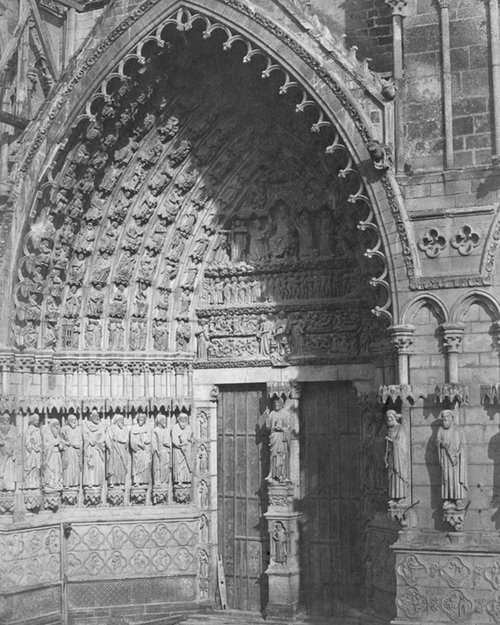
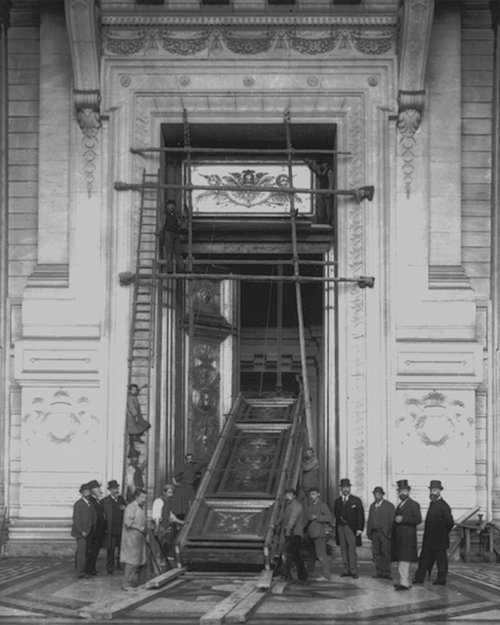
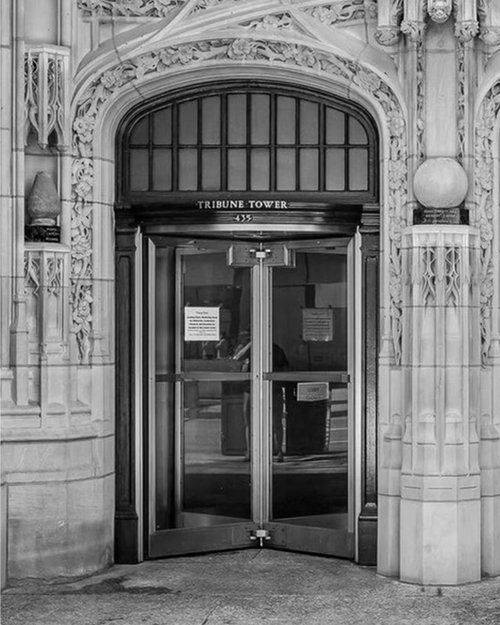



Bruno Latour describes, using the same architectural component, how human agency through architecture shifts to that of a technical actor. [7] However, the interpretation and classification of these technologies is not the subject of this paper. [8] Instead, the following assertions are made about doors:
Doors carry meaning. They possess symbolic value and, through their technical design and use-specific configurations, reflect and give spatial form to social processes. By negotiating interpersonal and spatial boundaries, doors take on a political dimension. When considered systematically and stripped of metaphor, the standard door operates according to a classically binary logic: it is either “open” or “closed.” [9] Along the development of architecture, a fundamentally binary understanding of space can be observed, which in turn results directly from architecture as a material manifestation of dominant worldviews. [10] The Central European tradition, at least since Aristotle, has been shaped by a binary logic that continues to inform architectural thinking. If doors function as both expressions and symbols of social conditions, and are inherently political, then we must ask: can they adequately address problems that defy binary resolution? Can they be systematically related to paradoxical phenomena, or those that at least appear contradictory – phenomena that are becoming increasingly prominent in both everyday and exceptional contexts? How might the operational field of the door be expanded to include more than two discrete states? And how might more complex interrelationships within a system be described?
To explore this further, we must move beyond the domains of construction and architectural design into a field that is often unfamiliar to architects: logic. Initial efforts to translate logical concepts into architectural discourse — though not specifically in relation to the door — can be found in the work of Doris and Ralph Thut. Their investigations, in turn, draw on the philosophical contributions of Gotthard Günther, particularly his theory of a many-valued — or polycontextural — logic.
The following reflections build on this significant preliminary work, which has largely gone unnoticed or been overlooked in broader architectural discourse. [11] The engagement with logic here, as the foundation for exploring the topic of many-valued doors, does not present its own considerations of logic, nor does it claim to match the formal rigor of Gotthard Günther, who was trained as both a philosopher and a logician. For this reason, the mathematical derivations and formalizations of many-valued logic are not presented in their full complexity. Rather, the intention is to explore the potential for a structural transposition of Günther’s ideas - perhaps in the spirit of the guiding principle: integration rather than separation. [12]
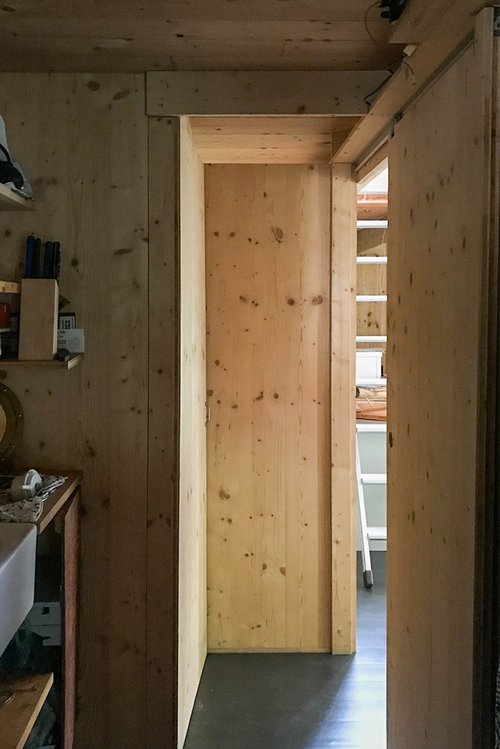
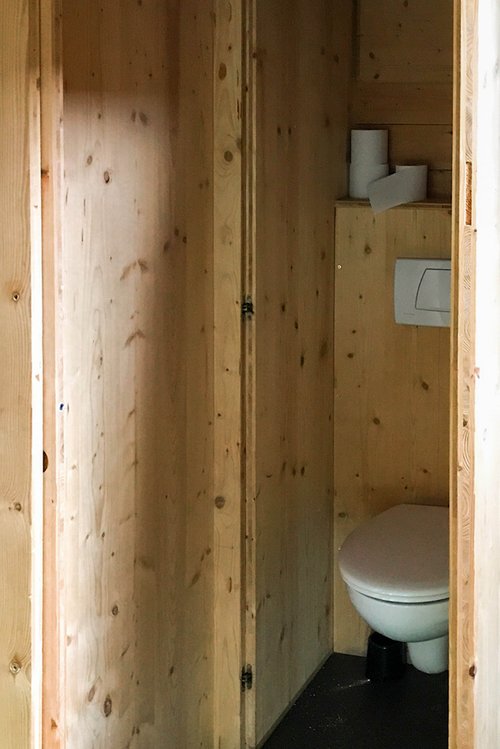
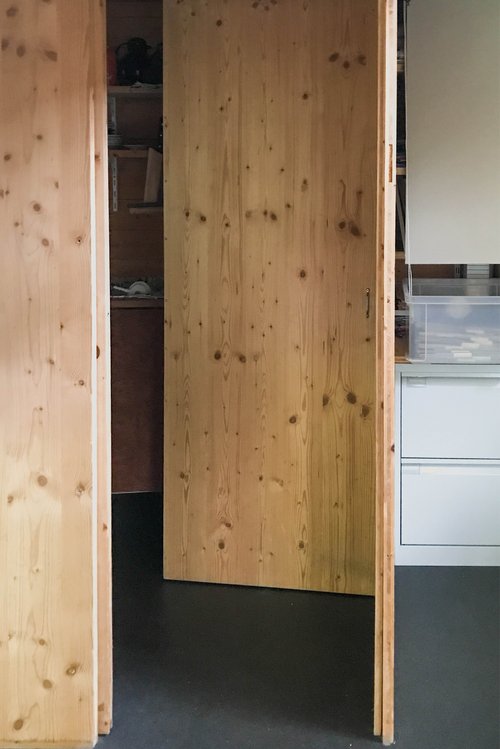
Logic may be understood as the theory of valid reasoning – of drawing correct inferences and thinking coherently. It concerns itself with propositions or, more precisely, with statements, judgements, and claims. Aristotle was likely the first to formalize logic as a system, positing that thought must be free of contradiction – that is, no statement can be both true and false at the same time. From this, a two-valued system emerges, operating through binary oppositions such as life and death, black and white, being and non-being. Within this framework, the concept of negation defines what stands as the logical opposite of a given proposition: if A is true, its negation is not-A. [13]
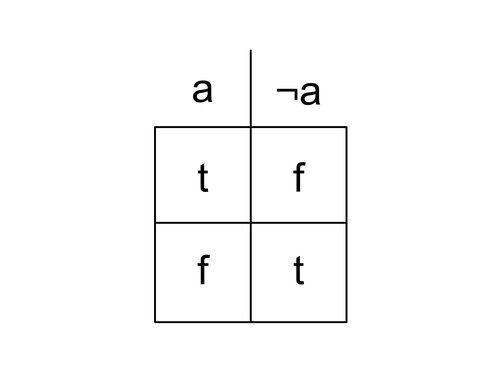
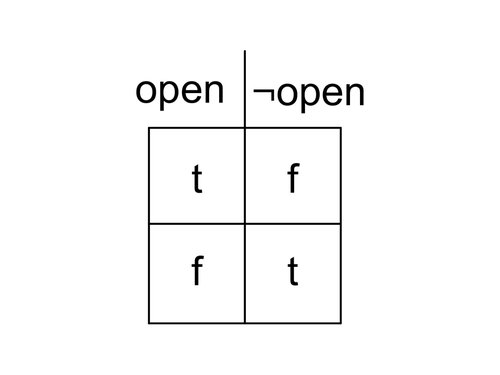
This represents a fundamental logical operation. When this schema is applied to the state of a door, It becomes clear that the earlier claim — that the door is a binary component — holds true. If the door is “open,” it cannot be “not open;” conversely, if it is “not open,” it is by definition not “open.” Within the framework of classical logic, the door is thus classified in a monovalent manner: with respect to the concept of openness, only a single, unambiguous state or property can be attributed to it. From this bivalence emerge the two ontological positions of “subject” and “object.” The subject, in this context, represents the negation of the object.
Aristotle articulated the fundamental principles and laws of classical logic, one of the most significant being the principle of tertium non datur (“A third is not given”): of two statements that contradict each other, one must be either true or false. There can be no third option, no intermediate or external position. In De Interpretatione, Aristotle himself notes that the tertium non datur does not apply to statements about the future, as such an application would lead to determinism. [14]
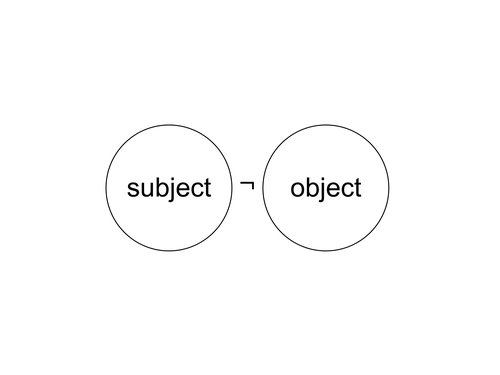
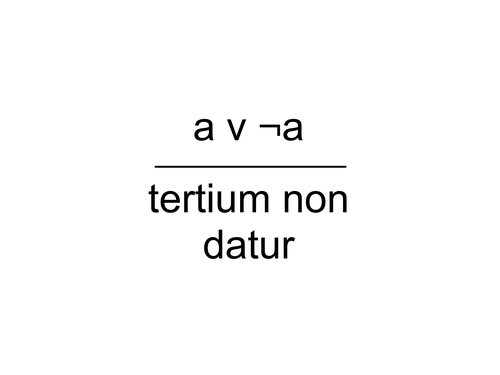
Despite this, bivalent thinking remains deeply embedded in our understanding and evaluation of the world. It is not apparent that it will become obsolete in the foreseeable future. According to Günther, it may persist “for all eternity.” [15] (own translation). The immense success of binary thinking throughout the history of science is undeniable. Many achievements are based on it, from the intellectual tradition of structuralism in linguistics to computer science, which has itself created systems of remarkable complexity. However, Gotthard Günther critiques classical two-valued logic as inadequate: on the one hand, because it cannot address the problem of time and is structurally limited by the exclusion of a third value (albeit one of infinite content); on the other hand, because he identifies a fundamental formal issue regarding the ontological positions of subject and object:
“Each individual subject grasps the world through the same classical logic, yet it does so from a different position within Being. The consequence is this: insofar as all subjects employ the same logic, their results are identical; yet insofar as their application occurs from different ontological positions, their results diverge.” [16] (own translation)
In summary, any classification of phenomena must take into account the context in which the observing subject — or its field of consciousness — is situated. Put differently, the perspective from which an observation is made is always integral to its interpretation. This dynamic is already evident in our everyday social interactions, where two subjects discuss a shared object.
In this context, the traditional subject-object distinction must be expanded to include a “you” in order to provide a more complete description. [17] A simple binary framework is insufficient to adequately capture this situation. In the consciousness of Subject A, there exists not only the object itself but also Subject B and B’s statements about the object. The same applies in reverse for Subject B. However, each subject remains internally bound to a two-valued logic, categorizing statements as either true or false. [18] Despite this, they may reach differing conclusions about the object – each of which, from its respective standpoint, can be considered “true.” Crucially, this does not imply an endorsement of relativism or subjective “alternative truths.” For example, if Subject A kicks Subject B in the shin, the event itself is an objective fact. However, the interpretation of the act – such as its legal implications – varies depending on perspective. In this case, truth or falsehood is assessed intra-contextually, meaning it is determined within the cognitive framework of each subject. Admittedly, this is a simplification that will require further refinement. Similarly, Gotthard Günther’s concept of polycontexturality will not be explored in depth here.
It suffices to say that polycontexturality refers to a qualitative multiplicity of so-called contextures — self-contained spaces of reality — between which one can mediate and transition. It also introduces the formal systems (morphogrammatics and kenogrammatics) necessary to structure such complexity. Even without delving further into these formalisms, one key insight emerges: the evaluation of any given state is ultimately determined by the standpoint from which it is observed - what could be termed a “place-value logic”. [19]
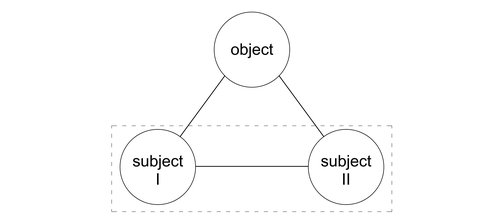
Excursus with reference to footnote 9:
Gotthard Günther distinguishes between intra-classical and trans-classical forms of polyvalence. Efforts to expand classical logic through many-valued systems had already been made before him - most notably by Jan Łukasiewicz and others. These approaches introduce additional truth values beyond the binary of 0 (= false) and 1 (= true), resulting in logics of probability that range from three-valued to infinite-valued systems. For example, values might progress from 0 to 0.5 to 1 (false-contingent-true), or follow the continuum of fuzzy logic (0-0.0001-0.0002-...-1).
While Günther acknowledges the foundational importance of these approaches, he ultimately deems them inadequate. In his view, their shortcoming lies in their failure to account for the ontological position from which judgments are made. [20]
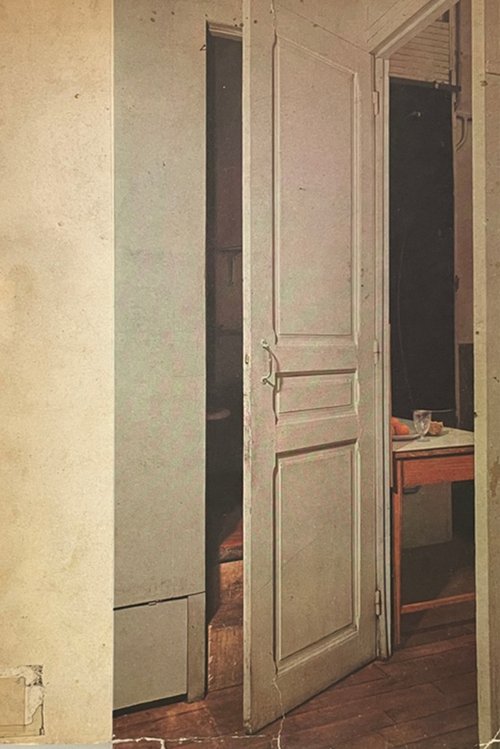

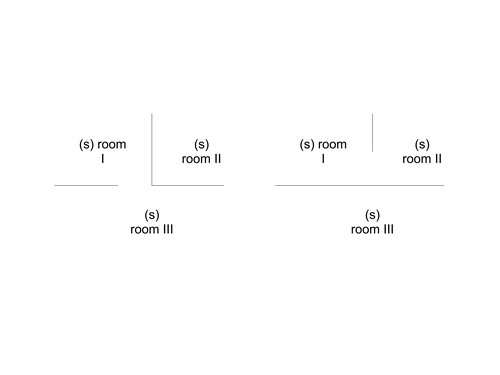
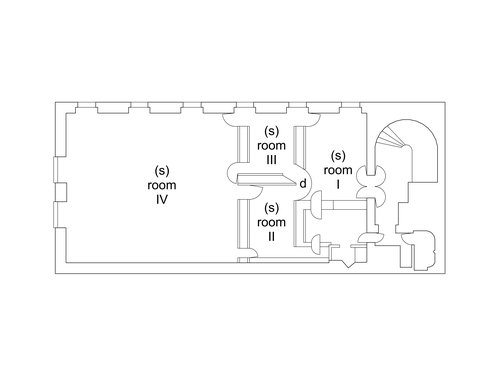
As previously established, a door can only be in one state at any given moment. In terms of the tertium non datur principle, this means: if the door is “closed,” it cannot simultaneously be “not-closed.” There is no third option. Conversely, if it is “open,” it cannot be “not-open.” A many-valued door, therefore, would need to be capable of occupying — or being assigned — multiple states, while also incorporating the dimension of time.
Indeed, there have been a few attempts to conceptualize such doors, though they remain rare. Marcel Duchamp, for instance, installed a door in his Paris apartment in such a way that a single door leaf served two door frames. This created a dependency between the private use of one room, in this case the bathroom, and that of the adjacent living and working room. [21]
Hermann Czech also referred to this door by Duchamp during the renovation of his Vienna studio. [22] Like Duchamp, Czech installed a door that could swing into two different frames. Architecturally, though, Czech’s version appears even more elaborate. Translated into the floor plan, this means that the rear studio can be accessed either through the shared meeting room or through the office – one of these pathways is always closed, while the other remains open. This creates a direct interdependency between the rooms behind the door. Each room remains intra-classically binary in terms of access — either open or closed — but now their states are mutually conditioned. Viewed from one room, the door appears open; from the other, it is experienced as not-open. In this sense, the door is simultaneously “open” and “not-open,” depending on the observer’s position. This fundamentally violates the law of the tertium non datur. Such a door can no longer be modeled within the formalism of classical logic. Even without surveying the users, one can reasonably assume that this spatial dependency has a tangible impact on how people interact and collaborate within the studio. [23]
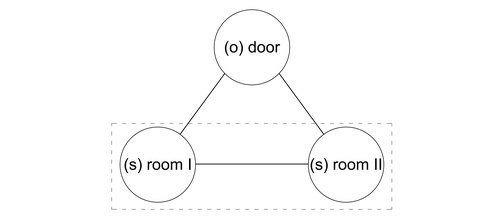
Here, a certainly welcome connection to residential architecture can be established. The foundation for these efforts at conceptual transfer lies in the assumption that the dynamics of cohabitation — including negotiating boundaries, whether personal and subjective or between social groups — cannot be adequately explained through oversimplification. Instead, it must be assumed that complex situations demand equally complex responses. [24] As previously shown, behavior in relation to doors is inherently political. Doors, in turn, serve as both symbols and expressions of social conditions. From this perspective, the development of doors that can reflect complex negotiations and paradoxical needs within human coexistence appears not only sensible, but, perhaps, necessary. An examination of contemporary residential architecture reveals that the dimension of time, as well as the intricate entanglement of diverse life realities within a single building, is insufficiently accounted for in mainstream housing production. [25] From this critique of the status quo, new questions emerge concerning the isolation of the apartment and the mono-functional coding of spaces. Integrating formalisms inspired by many-valued logic could foster a broader understanding of what doors do and how they can be described. Importantly, the aim is not to elevate the door into a kind of architectural fetish. Rather, the focus is on the practices and interactions surrounding doors - how they structure, regulate, and express spatial and social dynamics. The door itself is only one component within this wider field of observation.
It is also necessary to consider the limits and possibilities of technical expectations: To what extent can a technological object like a door contribute to solving, or at least mediating, interpersonal tensions and social issues? This hope must be approached both critically and constructively. At the same time, it should be asked whether the challenges outlined are more appropriately addressed on organizational or political levels than through technology alone. Yet in the face of pressing contemporary questions, it is likely that no single solution will suffice. Rather, multiple approaches – often interlocking, sometimes contradictory or independently operating – must be considered. In this sense, what might be called polyvalent solutions may increasingly come into view.
What follows is a series of briefly annotated, schematic examples of how multivalent doors might – or already do – function when considered in isolation. These illustrations are not logical conjunctions in the formal sense, but they do borrow from the structural principles of logic.
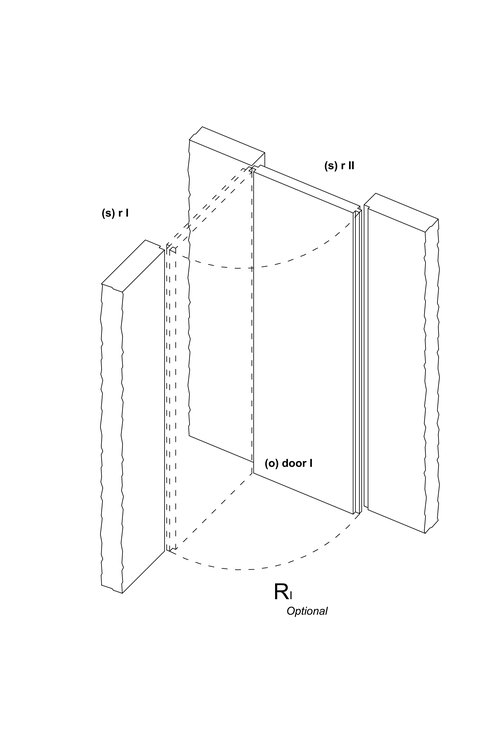
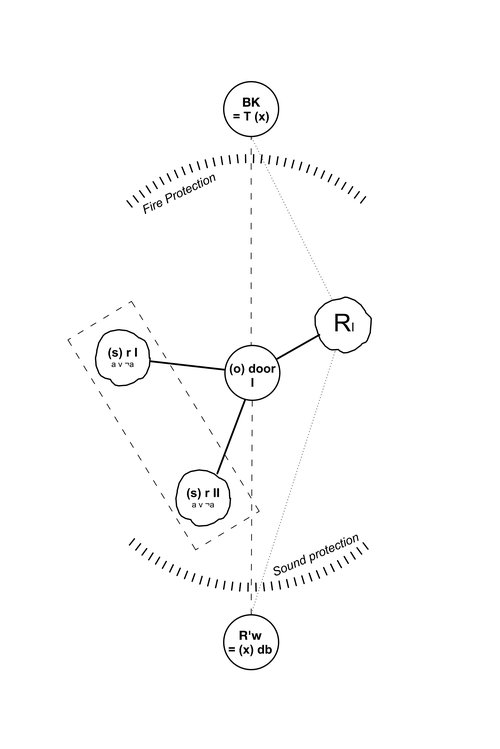
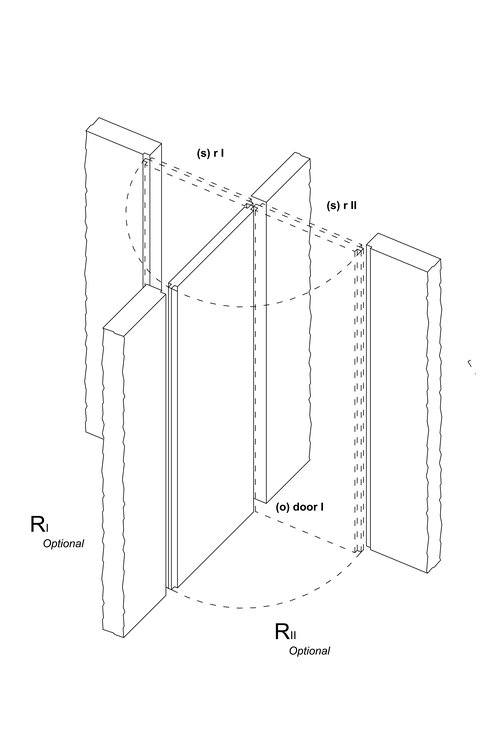
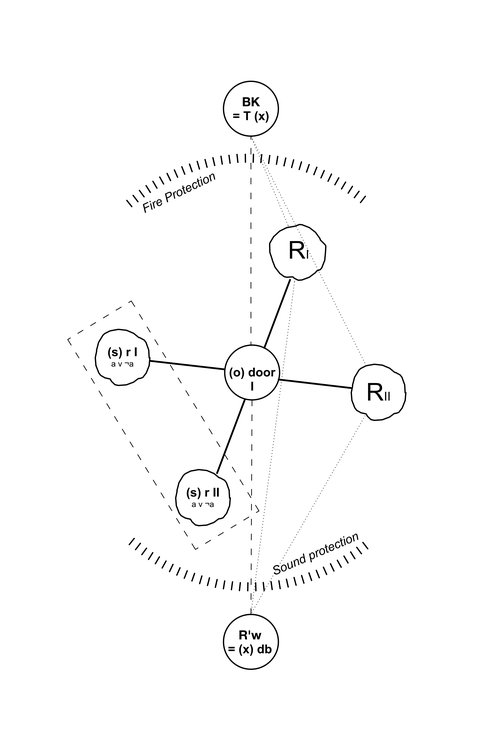
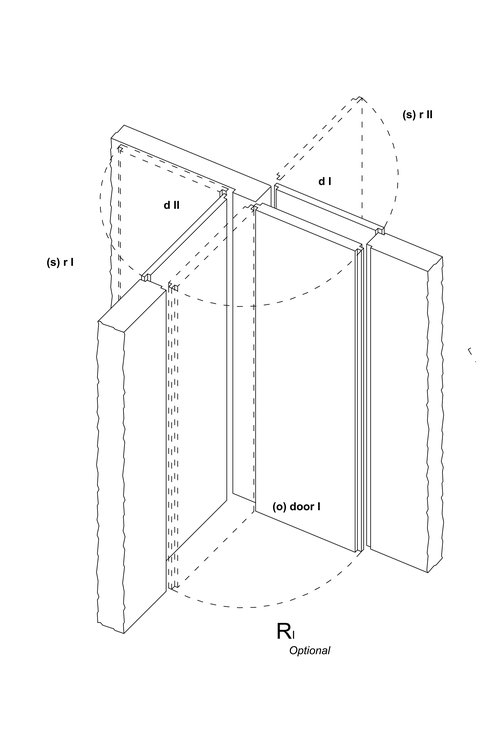
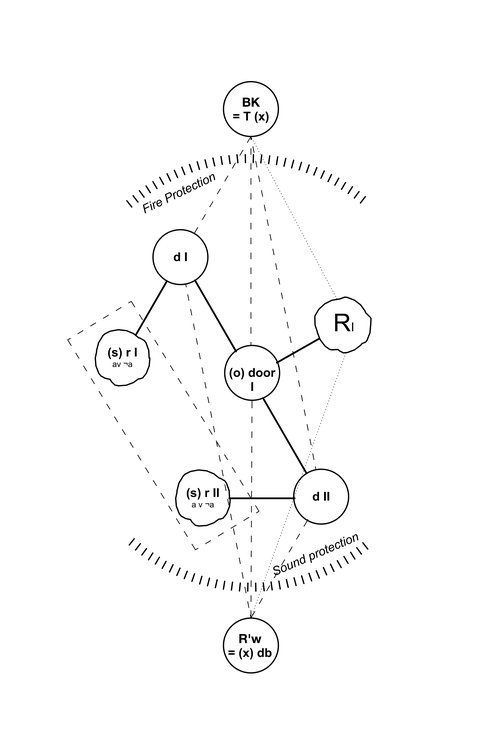
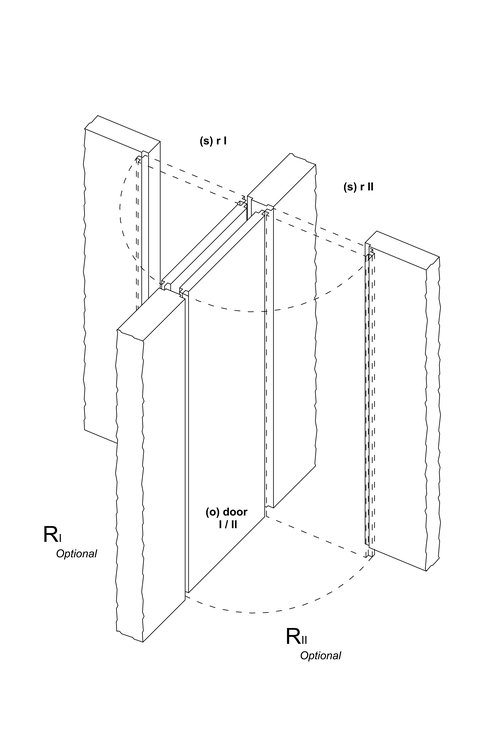
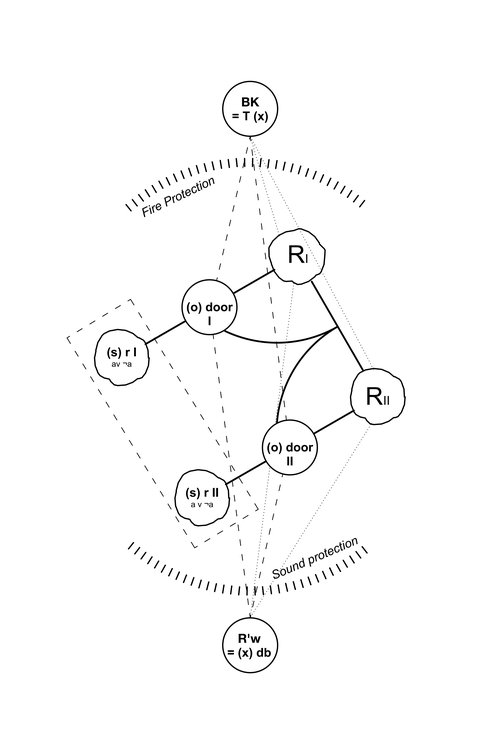
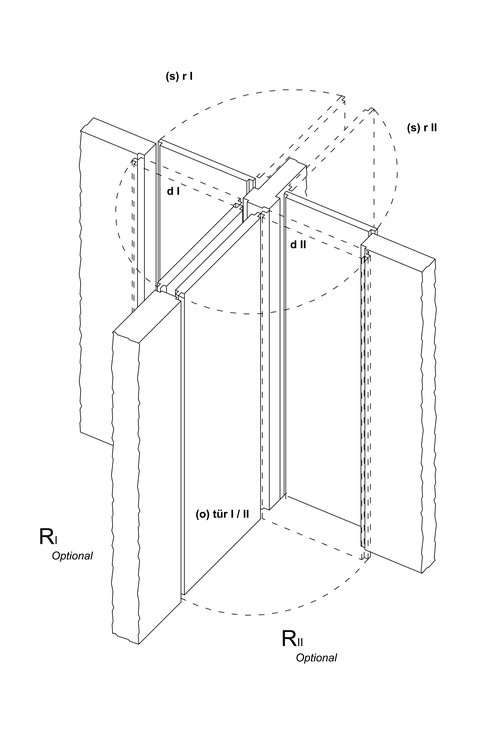
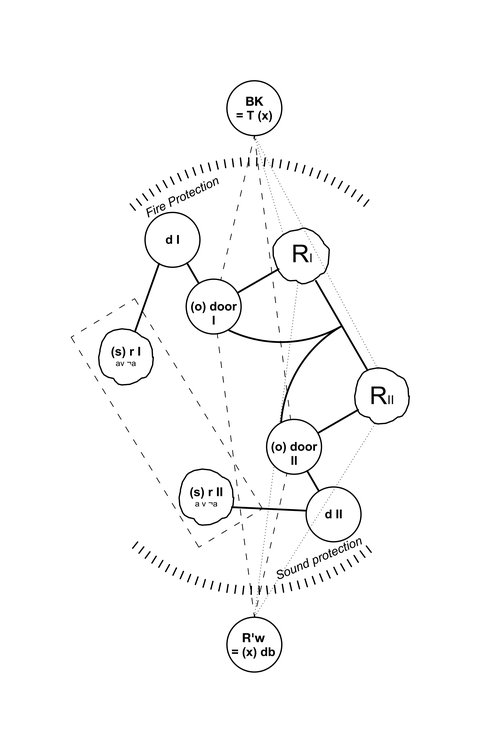
Teaser: Prototype by Julian Hüther, Maximilian Lesch, Tim Tauber — as part of the design studio at RWTH Aachen "Mehrwertige Türen"
1: Bisson frères, Amiens, portail du Beau Dieu Vers 1865 Épreuve sur papier albuminé à partir d'un négatif verre Achat, 1985 © Musée d’Orsay, Dist. RMN-Grand Palais / Alexis Brandt, https://www.musee-orsay.fr/fr/oeuvres/amiens-portail-du-beau-dieu-30376 — accessed on 01.06.2025, 18:13 CET
2: https://be-monumen.be/patrimoine-belge/la-porte-du-palais-de-justice-bruxelles/ — accessed on 21.04.2025, 17:12 CET
3: https://klopasstratton.com/properties/435-n-michigan-avenue-unit-501-chicago-il-60611-11264909 — accessed on 01.06.2025, 17:24 CET
4: https://www.planet.ag/de ; accessed on 21.04.2025, 16:48 CET
5: https://www.geze.de/de/produkte-loesungen/drehtueren/tuerschliesser/gleitschiene_1_fluegelig/ts_5000_r/p_4951 — accessed on 21.04.2025, 17:28 CET
6: https://www.paneldoorsolutions.de/wp-content/uploads/FireStop.pdf — accessed on 21.04.2025, 16:53 CET
7-15,17,19,19-27: Robert Saat
11-15: based on: Dimensionen des Denkens: Dreiwertige Logik erklärt auf der Basis von Gotthard Günther, Petra Sütterlin, 2009, Philognosie Verlag
16: https://www.printedmatter.org/catalog/65130/ — accessed on 21.04.2025, 17:01 CET
17: based on: Bernhard Siegert, Türen. Zur Materialität des Symbolischen, in: Zeitschrift für Medien- und Kulturforschung - March 2010 ; Original in: Orbes, 2e série, 1933 (Sommer), S. XV und XVI
18: Copyright: Gabriele Kaiser, https://www.proholz.at/zuschnitt/68/im-gespraech — accessed on 21.04.2025, 17:06 CET
19: based on https://www.bsa-fas.ch/de/a/176-atelier-hermann-czech-wien/ — accessed on 21.04.2025, 17:09 CET
Latour, B. (1992) “Where are the missing masses? The sociology of a few mundane artifacts,” in Bijker, W. E. and Law, J. (eds.) Shaping Technology/Building Society: Studies in Sociotechnical Change. Cambridge, MA: MIT Press, pp. 225-258.
„Wenn, an romanischen und gotischen Domen die Maueröffnungen sich allmählich zu der eigentlichen Tür hin verengern und man diese zwischen immer näher aneinander rückenden Halbsäulen und Figuren erreicht, so ist damit der Sinn dieser Türen ersichtlich als ein Hineinführen, nicht aber als ein Hinausführen — dieses vielmehr nur als ein leidig unvermeidliches Akzidens — gemeint“, Simmel, G. (1957). Brücke und Tür: Essays des Philosophen zur Geschichte, Religion, Kunst und Gesellschaft. Hrsg. von M. Landmann in Zusammenarbeit mit M. Susman. Frankfurt am Main: K.F. Koehler Verlag.
Examples include the gates of Shani war Wada in Pune, with integrated elephant protection, or the gates of Hochosterwitz Castle. Cf. Koolhaas, R., Boom, I., and Office for Metropolitan Architecture (OMA) (2014). Elements of Architecture: Door. Venice: Marsilio.
The doors of courthouses built during the emergence of the separation of powers in Central Europe – for instance, the Palais de Justice in Brussels (1888) or the Imperial Court in Leipzig (1888) – communicate, through their mass and often imposing height, a tactile and visual message to those entering: the court stands above the individual. There is a certain paradox in this—while courts are meant to protect the vulnerable, their doors are often so heavy that the vulnerable cannot even open them.
Such elements are subject to varying interpretations.
Adorno goes so far as to claim that doors which must be forcefully shut – car doors, refrigerators, and the like – are indicators of a fascist disposition, see: Adorno, T.W. (1973). Minima Moralia: Reflexionen aus dem beschädigten Leben. Frankfurt am Main: Suhrkamp, p. 44
Latour, B. (1992) “Where are the missing masses? The sociology of a few mundane artifacts,” in Bijker, W. E. and Law, J. (eds.) Shaping Technology/Building Society: Studies in Sociotechnical Change. Cambridge, MA: MIT Press
On the contrary – these technologies are, in fact, affirmatively appropriated over the course of this paper to explore whether they might prove useful for its purposes.
A brief anticipatory note may be necessary here: intermediate states – such as a door being half-open, ajar, or physically divided – do not, strictly speaking, represent multiple states at once. While they may be considered many-valued in a classical (intra-classical) sense, they do not conform to many-valued logic as understood in Günther’s trans-classical framework, which will be interpreted and applied in the following discussion.
Cf. Joseph Ditterich, Doris and Ralph Thut, KAWASAKI, Konzept-Design für einen Intelligent Plaza, Concept-Design for an Intelligent Plaza, Issue 1, SEC Series, Ed. Institut für polykontexturale Architektur I-PCA, Munich, 2007, p.8
The intended translation of many-valued logic into architectural components is meant to be a continuation of the collective cultural project initiated by I-PAC, which explicitly sought to stimulate such interdisciplinary engagement. See: Ditterich, J., Thut, D. and Thut, R. (2007). KAWASAKI. München: Akad. Verl., p.10
Dammbeck, L. (2010). Das Netz: Über Leben im digitalen Zeitalter. [Film] Deutschland: DOK Leipzig. – Heinz von Förster was the director of the Biological Computer Laboratory (BCL), where Gotthard Günther was also employed, and a researcher on cybernetics and constructivism, among other topics.
The following discussion is based on: Sütterlin, P. (2009). Dimensionen des Denkens: Dreiwertige Logik erklärt auf der Basis von Gotthard Günther. Frankfurt am Main: Philognosie Verlag.
Cf. Aristotle, De Interpretatione, Chapter 9: “There will be a sea battle tomorrow” – “There will not be a sea battle tomorrow.” The principle of the excluded middle (tertium non datur) cannot be applied here, or more generally to statements concerning a contingent future, as doing so would imply determinism. It is therefore only applicable to statements about the past and present.
Günther, G. (1959). Die Theorie der mehrwertigen Logik. Berlin: Akademie Verlag, p.15
Gotthard Günther: Das Problem einer Trans-klassischen Logik, p.13, in: www.vordenker.de Edition: Frühjahr 2005, J.Paul, (Ed.), first published in: Sprache im technischen Zeitalter, 1965, Issue 16, pp. 1287-1308
Sütterlin, P. (2009). Dimensionen des Denkens: Dreiwertige Logik erklärt auf der Basis von Gotthard Günther. Frankfurt am Main: Philognosie Verlag.
“This gives rise to a peculiar paradox: although all human thought is binary—and, as we wish to emphasize once more, will remain so for all eternity—the world that this consciousness seeks to comprehend theoretically is ontologically multivalent.” Günther, G. (1959). Die Theorie der mehrwertigen Logik. Berlin: Akademie Verlag, p. 15. Own translation.
Lorenz,K., Grube, G. (1997) Interview mit Heinz von Foerster, https://www.vordenker.de/hvf/kl_gg_hvf_interview.pdf — accessed on 12.03.2025, 20:21 CET
Günther, G. (1959). Die Theorie der mehrwertigen Logik. Berlin: Akademie Verlag, p.3
He illustrated this using very simple, yet quite interesting drawings that bear a certain resemblance to electrical circuits.
Phone Call with Hermann Czech on 02.05.2025
Anyone who sees this as merely an architectural gimmick should try replacing this door with two ‘normal’ ones.
This may well run counter to the current zeitgeist, which – both in politics and in architecture – is marked by a demand for simplification. This statement is intentionally framed as a critique and should be explicitly understood as such. At the same time, it does not advocate for excessive bureaucratization or standardization, but rather seeks to emphasize that alternative forms of negotiation and regulation for complex issues should be explored, rather than flattening them through simplification. Underlying this is the concern that simplification often serves to reinforce already established or conservative worldviews and power structures, rather than addressing the legitimate claims of marginalized or disadvantaged groups.
See, for example, the increasing per capita use of floor space despite ongoing housing shortages, or the so-called “empty nest” effect. Since 1950, an average of 405,000 new housing units have been completed annually in the Federal Republic of Germany. (n.d.). Federal Statistical Office. Retrieved March 2, 2025, from https://www.destatis.de/DE/Presse/Pressemitteilungen/2023/06/PD23_N041_31.html; see also: Institute for Energy and Environmental Research (ifeu gGmbH). (2018, November 2). Empty Nest – Bedarfsorientierte Anpassung von Wohnfläche. ifeu gGmbH: Institute for Energy and Environmental Research. https://www.ifeu.de/nachrichtenarchiv/empty-nest-bedarfsorientierte-anpassung-von-wohnflaechen
Latour, B. (1992) “Where are the missing masses? The sociology of a few mundane artifacts,” in Bijker, W. E. and Law, J. (eds.) Shaping Technology/Building Society: Studies in Sociotechnical Change. Cambridge, MA: MIT Press, pp. 225-258.
„Wenn, an romanischen und gotischen Domen die Maueröffnungen sich allmählich zu der eigentlichen Tür hin verengern und man diese zwischen immer näher aneinander rückenden Halbsäulen und Figuren erreicht, so ist damit der Sinn dieser Türen ersichtlich als ein Hineinführen, nicht aber als ein Hinausführen — dieses vielmehr nur als ein leidig unvermeidliches Akzidens — gemeint“, Simmel, G. (1957). Brücke und Tür: Essays des Philosophen zur Geschichte, Religion, Kunst und Gesellschaft. Hrsg. von M. Landmann in Zusammenarbeit mit M. Susman. Frankfurt am Main: K.F. Koehler Verlag.
Examples include the gates of Shani war Wada in Pune, with integrated elephant protection, or the gates of Hochosterwitz Castle. Cf. Koolhaas, R., Boom, I., and Office for Metropolitan Architecture (OMA) (2014). Elements of Architecture: Door. Venice: Marsilio.
The doors of courthouses built during the emergence of the separation of powers in Central Europe – for instance, the Palais de Justice in Brussels (1888) or the Imperial Court in Leipzig (1888) – communicate, through their mass and often imposing height, a tactile and visual message to those entering: the court stands above the individual. There is a certain paradox in this—while courts are meant to protect the vulnerable, their doors are often so heavy that the vulnerable cannot even open them.
Such elements are subject to varying interpretations.
Adorno goes so far as to claim that doors which must be forcefully shut – car doors, refrigerators, and the like – are indicators of a fascist disposition, see: Adorno, T.W. (1973). Minima Moralia: Reflexionen aus dem beschädigten Leben. Frankfurt am Main: Suhrkamp, p. 44
Latour, B. (1992) “Where are the missing masses? The sociology of a few mundane artifacts,” in Bijker, W. E. and Law, J. (eds.) Shaping Technology/Building Society: Studies in Sociotechnical Change. Cambridge, MA: MIT Press
On the contrary – these technologies are, in fact, affirmatively appropriated over the course of this paper to explore whether they might prove useful for its purposes.
A brief anticipatory note may be necessary here: intermediate states – such as a door being half-open, ajar, or physically divided – do not, strictly speaking, represent multiple states at once. While they may be considered many-valued in a classical (intra-classical) sense, they do not conform to many-valued logic as understood in Günther’s trans-classical framework, which will be interpreted and applied in the following discussion.
Cf. Joseph Ditterich, Doris and Ralph Thut, KAWASAKI, Konzept-Design für einen Intelligent Plaza, Concept-Design for an Intelligent Plaza, Issue 1, SEC Series, Ed. Institut für polykontexturale Architektur I-PCA, Munich, 2007, p.8
The intended translation of many-valued logic into architectural components is meant to be a continuation of the collective cultural project initiated by I-PAC, which explicitly sought to stimulate such interdisciplinary engagement. See: Ditterich, J., Thut, D. and Thut, R. (2007). KAWASAKI. München: Akad. Verl., p.10
Dammbeck, L. (2010). Das Netz: Über Leben im digitalen Zeitalter. [Film] Deutschland: DOK Leipzig. – Heinz von Förster was the director of the Biological Computer Laboratory (BCL), where Gotthard Günther was also employed, and a researcher on cybernetics and constructivism, among other topics.
The following discussion is based on: Sütterlin, P. (2009). Dimensionen des Denkens: Dreiwertige Logik erklärt auf der Basis von Gotthard Günther. Frankfurt am Main: Philognosie Verlag.
Cf. Aristotle, De Interpretatione, Chapter 9: “There will be a sea battle tomorrow” – “There will not be a sea battle tomorrow.” The principle of the excluded middle (tertium non datur) cannot be applied here, or more generally to statements concerning a contingent future, as doing so would imply determinism. It is therefore only applicable to statements about the past and present.
Günther, G. (1959). Die Theorie der mehrwertigen Logik. Berlin: Akademie Verlag, p.15
Gotthard Günther: Das Problem einer Trans-klassischen Logik, p.13, in: www.vordenker.de Edition: Frühjahr 2005, J.Paul, (Ed.), first published in: Sprache im technischen Zeitalter, 1965, Issue 16, pp. 1287-1308
Sütterlin, P. (2009). Dimensionen des Denkens: Dreiwertige Logik erklärt auf der Basis von Gotthard Günther. Frankfurt am Main: Philognosie Verlag.
“This gives rise to a peculiar paradox: although all human thought is binary—and, as we wish to emphasize once more, will remain so for all eternity—the world that this consciousness seeks to comprehend theoretically is ontologically multivalent.” Günther, G. (1959). Die Theorie der mehrwertigen Logik. Berlin: Akademie Verlag, p. 15. Own translation.
Lorenz,K., Grube, G. (1997) Interview mit Heinz von Foerster, https://www.vordenker.de/hvf/kl_gg_hvf_interview.pdf — accessed on 12.03.2025, 20:21 CET
Günther, G. (1959). Die Theorie der mehrwertigen Logik. Berlin: Akademie Verlag, p.3
He illustrated this using very simple, yet quite interesting drawings that bear a certain resemblance to electrical circuits.
Phone Call with Hermann Czech on 02.05.2025
Anyone who sees this as merely an architectural gimmick should try replacing this door with two ‘normal’ ones.
This may well run counter to the current zeitgeist, which – both in politics and in architecture – is marked by a demand for simplification. This statement is intentionally framed as a critique and should be explicitly understood as such. At the same time, it does not advocate for excessive bureaucratization or standardization, but rather seeks to emphasize that alternative forms of negotiation and regulation for complex issues should be explored, rather than flattening them through simplification. Underlying this is the concern that simplification often serves to reinforce already established or conservative worldviews and power structures, rather than addressing the legitimate claims of marginalized or disadvantaged groups.
See, for example, the increasing per capita use of floor space despite ongoing housing shortages, or the so-called “empty nest” effect. Since 1950, an average of 405,000 new housing units have been completed annually in the Federal Republic of Germany. (n.d.). Federal Statistical Office. Retrieved March 2, 2025, from https://www.destatis.de/DE/Presse/Pressemitteilungen/2023/06/PD23_N041_31.html; see also: Institute for Energy and Environmental Research (ifeu gGmbH). (2018, November 2). Empty Nest – Bedarfsorientierte Anpassung von Wohnfläche. ifeu gGmbH: Institute for Energy and Environmental Research. https://www.ifeu.de/nachrichtenarchiv/empty-nest-bedarfsorientierte-anpassung-von-wohnflaechen



